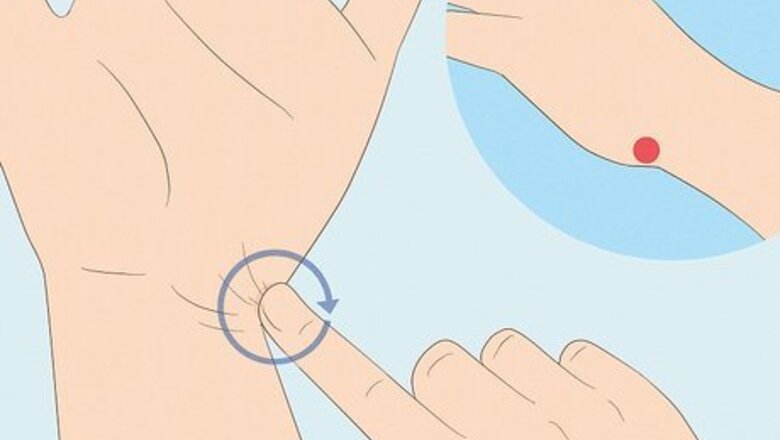
views
X
Research source
Small Intestine 4 (SI4)

SI4 is on the pinky side of your hand, where the hand and wrist meet. While the acupressure point soothes back pain, it’s also helpful for dealing with headaches or a stiff neck. Bend your wrist slightly to find the point where your skin creases; this is the pressure point location. Press the spot with your index finger and rub it with small circular motions, massaging the pressure point for 30 seconds. Apply firm pressure but don’t cause yourself any pain in the process. The amount of force needed for acupressure can vary from person to person, so find a grip that works for you.
Ling Gu (LI4)
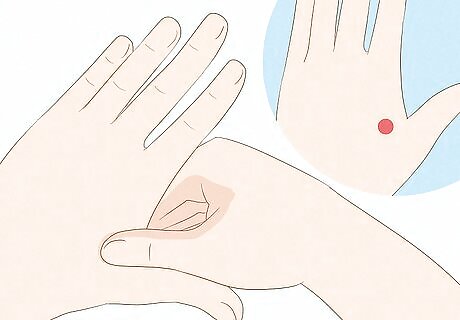
Ling Gu is between the thumb and first finger on the back of your hand. Activating the LI4 point on each hand helps relax your muscles and increase blood flow, relieving pain all around your body. Find the fleshy point between your thumb and index finger on one hand and press on it with your other index finger, directing pressure back towards your wrist. Massage the point for 30 seconds and then release. Once you do this on one hand, do it again for another 30 seconds on the other. Repeat the movement 4 or 5 times on each hand to maximize its effectiveness. Try laying down on your back while you do it, as this can further help with your back pain.
Triple Energizer (TE3)
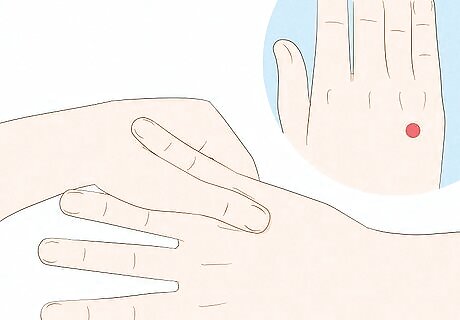
TE3 is located in the groove between your fourth finger and pinky. Stimulate the TE3 to help with upper back pain, shoulder pain, headaches, and neck stiffness. Use your thumb to firmly rub the pressure point, directing the force back towards your wrist. Keep the pressure going for 1 minute, then gradually release and repeat the motion on your other hand. This pressure point can activate different parts of your brain, promoting increased circulation throughout your body and relaxed muscles.
Stomach (CV6)
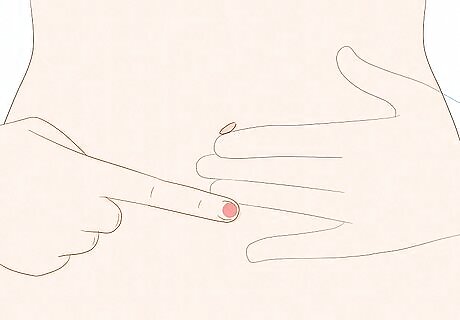
The CV6 point lies 3 finger-widths below your belly button. Activating this pressure point soothes lower back pain long-term by strengthening your waist and hip muscles. Press the point with your index finger (or index and middle finger together) and maintain steady, firm pressure for 1 minute. Then, gradually release the pressure. Repeat this exercise 2 or 3 times over the next 10 minutes to make it even more effective.
Kidney Shu (B23)
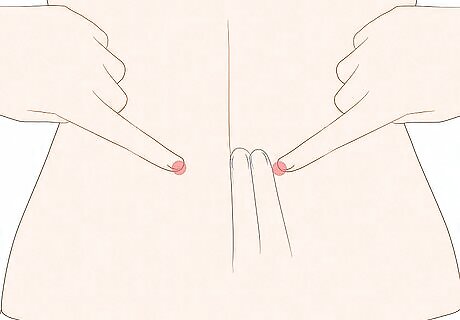
Find the B23 points at waist level on each side of the spinal cord. Pressure points along the spine can alleviate discomfort regardless of where you feel the back pain! The B23 points are located just above the level of your hip bones, 2 finger-widths from your spine on either side. Reach around your lower back and press down on each point with your index fingers. Hold firmly for 2 minutes, then relax. Ask a friend to perform the acupressure after showing them a diagram of each pressure point if you lack the flexibility or strength to do it yourself. Alternatively, if nobody is around, lay on your back and roll a tennis ball around the area for a few minutes.
Bladder 47 (B47)
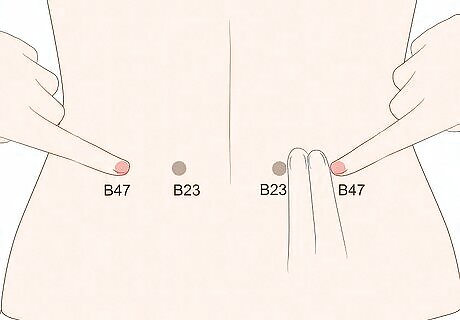
B47 is 2 finger-widths from B23 on either side away from your spine. Once you activate the B23 pressure points, move your index fingers a couple of inches farther out to the sides and press down firmly to stimulate the B47 points. Hold them in place for 2 minutes, then slowly release the pressure and remove them. These pressure points are equally helpful (like B23) in relieving all kinds of back pain, including pinched nerves, herniated discs, and sciatica.
Bladder 48 (B48)
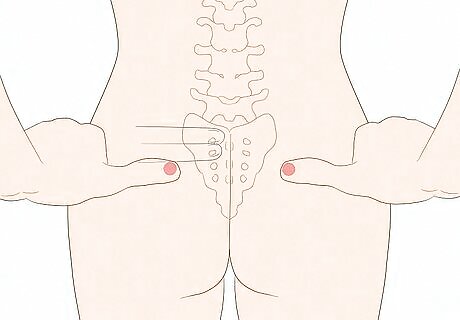
The B48 points are 2 finger-widths from the bottom of your spine. Located sideways from the sacrum (tail bone), the B48 points can help relieve sciatica, plus lower back, pelvic, and hip pain. Position each of your thumbs over the B48 points and press down gradually, pushing your thumbs inward towards the center of your pelvis. Keep massaging for a couple of minutes, then release slowly. Try rolling a tennis ball or rubber ball across your gluteus medius (the muscle along the back of your hip). This technique is especially effective at treating back pain caused by sitting for long periods.
Gallbladder 30 (G30)
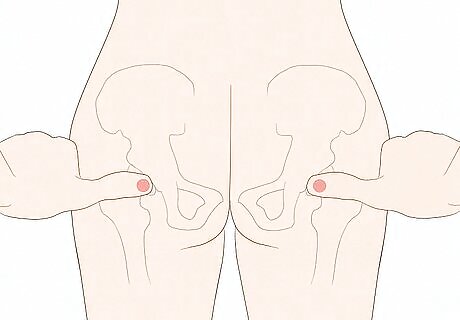
Your G30 points are located on the fleshy part of your buttocks. Using these pressure points can be as helpful as B48 in relieving lower back, pelvic, and hip pain. Find each pressure point midway between the top of the hipbone and the bottom of your buttocks. Press down and inward with your thumb towards the center of your buttocks, hold firmly for 2 minutes, then slowly release. The sciatic nerve is the thickest nerve in the body and runs down each leg through the buttocks region. Be careful not to irritate the sciatic nerves when putting pressure on those muscles.
Urinary Bladder 40 (UB40)

UB40 (also sometimes referred to as B54) is on the backs of your knees. Stimulating this point can relieve back stiffness and sciatica pain in the hips and legs. Sit down and find each pressure point right below the center of the knee joint. Press down with each of your thumbs and hold firmly for at least 30 seconds, then release gradually. Do the point behind each of your knees at the same time
Urinary Bladder 57 (UB57)

You can find UB57 midway down the back of your lower leg. The UB57 pressure point is useful for relieving lower back pain and muscle cramps. Sit down on a chair and cross your leg before using your thumb to find UB57 right at the lower edge of your calf muscle. Press down with your thumb and rub in small circular motions for 1 minute before releasing and moving to the other leg. You can rub UB57 with your leg crossed or keep both feet flat on the floor and bend slightly to massage the pressure point. Pick the position most comfortable for you!
Liver 3 (LV3)
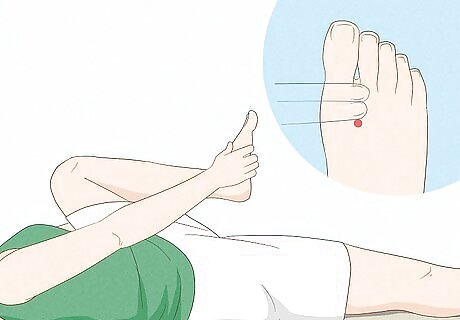
The Liver 3 point is between your big and second toes. Not only can acupressure on your LV3 points relieve back pain, but it can also reduce your anxiety! Lay down on your back and bend your knee so you can reach out and hold your foot. Apply pressure to the LV3 point with your thumb (2 finger widths below the spot where your toes meet) and hold for 1 minute before repeating on the other foot. Acupressure on the LV3 points can also help with insomnia and high blood pressure because it reduces anxiety.















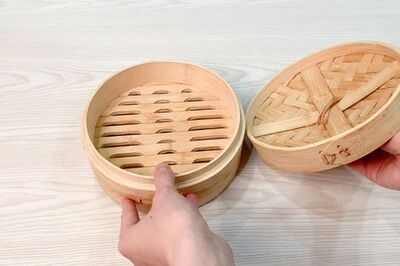
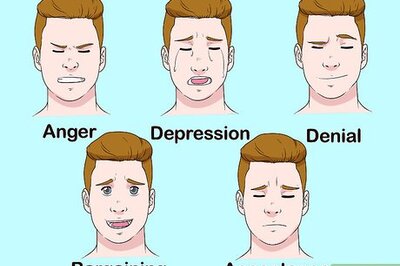
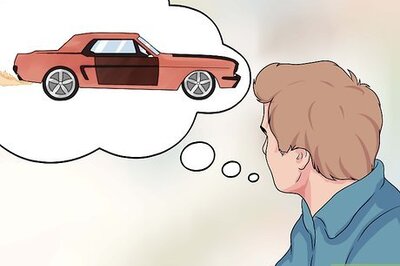
Comments
0 comment